Mitsubishi Pajero
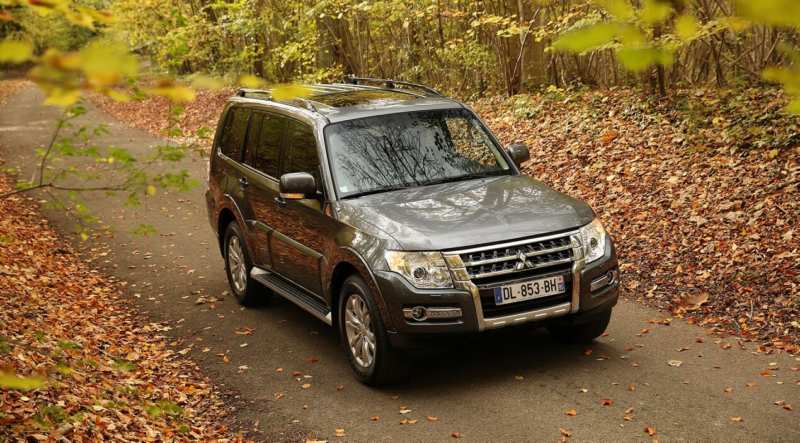
Mitsubishi Pajero is a world-famous rally SUV from the Mitsubishi manufacturer. Full-size car is the leader of the manufacturer’s model range. The name was given in honor of a cat that lives in southern Argentina. In fact, Mitsubishi Pajero is a legendary car. The 4th generation has received another update, which is the second restyling of the world-famous off-road type car. The whole model range is Mitsubishi.
- Car history
- First generation (1982-1990)
- Second Generation (1991-1999)
- Before restyling (1991-1996)
- After restyling (1997-1999)
- Mitsubishi Padjero specifications
- Three generations (1999-2006)
- Specifications of the third generation
- Fourth generation
- Exterior
- Interior
- Specifications
- Powertrain
- Transmission
- Suspension
- Rule control
- Brake system
- Dimensions
- Safety
- Complections and prices
- Fifth generation
- Pluses and minuses
- We sum up
- Mitsubishi Pajero 4 photo
- Test drive
- Video overview
Car history
The story of this legend began in the deep autumn of 1973. That year the off-road variant was shown for the first time at the Tokyo Motor Show. The car received an abundance of similar elements with the concept of Jeep, especially in the cabin. The experimental version of 2 families was released strictly after 5 years, in 1978.
Japanese management decided not to be satisfied with the boundaries of SUV, which imposed a kind of a template on the current version, but to create a full-fledged SUV. When 1983 came, Paggiero took part in the Parish-Dakar rally for the first time. By 1985, afterwards, 2 unsuccessful samples of the car got, eventually, the 1st position in the championship.
To date, the Japanese SUV is considered the most successful car in the Rally Dakar. In addition, later on, there was a tendency to create compact SUVs. Therefore, the Japanese experts did not miss this niche and created Mitsubishi Pajero Pinin.
First generation (1982-1990)
Shortly after the show of the concept model, the serial version was opened, which was presented at the same Tokyo Motor Show in 1981. The production of the vehicle began in 1982. Initially, the car was produced only in a 3-door bodywork version with a reduced wheelbase and 2 roof variants – covered, made of metal and folding.
Mitsubishi Pajero 1 had a 2.0-l engine with 4 cylinders running on gasoline, 2.6-l engine on gasoline with the same number of cylinders, 2.3-l diesel version and 2.3-l “engine”, also running on diesel fuel and received turbocharged.
The car was able to create a real sensation in the car market. Here it is necessary to clarify one important idea – Padjero 1, is in reality the earliest off-road car, where the all-wheel drive system was installed. Thanks to the range of available equipment, the Paggiero all-wheel-drive off-road model has been designed.
This car successfully combined the comfort of a “passenger car”. A year after the start of production of the debut family in Japan, the SUV was able to enter the world market. But due to the lack of spaciousness of the vehicle (as well as two-door design) the public did not have a wide choice. Therefore, even if there was a willingness to buy this machine, the simple family could not do so, even for practical reasons.
On this basis, Mitsubishi decided in 1983 to build a 5-door modification with an increased wheelbase to meet the needs of customers around the world. The novelty was equipped with 2 motors. It was a 2.0-l “engine” with a turbine, running on gasoline and reinforced with 2.3-l turbocharged version, working on diesel fuel.
The vehicle was offered in 3 different body versions: Standard, Semi-High Roof and High Roof. In special order for the UN, the company released a unique 9-seat version. It was distinguished by the presence of a compacted armored top.
Mitsubishi Pajero’s interior design of the debut series is really comprehensive and practical. For example, the same armchairs could be folded, which is very practical. The car allowed you to wander comfortably in different cities, and the construction of the rear row of seats allowed you to remove them in this way, in order to easily make a place to sleep.
But in the summer of 1984, the SUV has undergone some changes. The company decided to improve the turbocharged diesel, to increase their torque. The cars with increased length of wheelbase had disc brakes on all four wheels.
The newest restyling series was put on sale since 1987. The body was designed in combination with 2 colors. The standard equipment had 15-inch rollers, heated armchairs installed in front, which were upholstered with leather, three-spoke steering wheel of the sports type, a good music system with radio and cassette tape recorder.
Since 1987, Pajero has been under the management of the company Dodge, which renamed the off-road vehicle Raider. In 1989, the car was produced under the management of an American company.
When 1988 came, consumers saw the newest engine from Mitsubishi with a volume of 3.0 liters.
All-wheel drive car had a V-shaped six-cylinder SOHC type engine. Together with it a 2.5-liter turbocharged diesel version was working. Long wheelbase series were distinguished by an upgraded suspension, which helped to make driving on a bad road comfortable.
The SUV was sold in 2 versions: a three-door version with a short base and a five-door version with an extended base. The function of the plug-in all-wheel drive system is even standard. The base 1 of the Paggiero family was later used officially for the design of the Hyundai Galloper, which was produced for 13 years.
In the Americas (apart from Brazil), Spain and India, this car was named Mitsubishi Montero, because in Spain the name “Paggiero” sounded unfavorable. The English market sold a lot of models, so the company also decided to rename the car into Shogun.
In 1990, a long wheelbase series Mitsubishi Pajero Elite, which differed from the standard modification, among other things, by a quality salon, was launched in the conveyor construction. At the same time, the car took 1 position in the category T3 on the Rally Tunis. Already next year, the version got the second place in the general championship at Rally Parish-Dakar. By 1991, in a modest circulation released 3 special series:
- Mitsubishi Pajero Togo, which was a short base version of “canvas top” and had a leather interior with inserts of expensive trees, cast rollers and expanded arches of wheels;
- Mitsubishi Pajero Exe – is a long base version and has a system of centralized locking of locks, as well as the interior in blue color;
- Mitsubishi Pajero Osaka – received a system of centralized locking locks and had a leather interior, as well as inserts of expensive tree species.
Second Generation (1991-1999)
Before restyling (1991-1996)
Only two years later, the Japanese were able to sell more than 300,000 of their SUVs in 1989 and 1990. After that, in 1991, when the 1st generation jeep was in its highest place, the second generation came, which did not lose to the debut car. In 1991 Mitsubishi Pajero 2 was launched.
It had the latest Super Select 4WD system, which allows you to move in 4×4 mode on a dry road with the help of an inter-axle differential. A couple of power units were installed. The novelty had a 3.0-liter 6G72, powered by gasoline and a diesel 2.5-liter 4D56 engine.
The five-door version received 3 rows of armchairs, and the body with a soft roof received an electric drive. On the second family of Paggiero was a version with adjustable shock absorbers inside the car, mechanical winch and hydraulic system for changing the height of the ground clearance.
Along with comfortable modifications, Paggiero produced commercial version with motors from the initial family. There was also a rear suspension, located on the springs and not so comfortable interior. In principle, 2 families of off-road cars were a deep modernization of the previous generation.
Despite this, Paggiero looked more modern, grew slightly in size, and the rear suspension got springs. The model was available in 3-door and 5-door versions. The five-door version was designed with a high roof. By 1993, they decided to install newer engines, among which was 3.5-l 6G73, which worked on gasoline and received a pair of upper “camshafts”.
In addition to it, a 2.8-liter 4M40 unit was installed, operating on diesel fuel, where there was an intercooler and chain drive of gas distribution mechanism. At the same time, the gasoline unit 6G72 was upgraded, which received four valves per cylinder. The rear mounted suspension was equipped with springs and placed on 2 levers of longitudinal type with Panara thrust, and in front was a torsion beam on double levers of transverse type.
Thanks to the Super-Select 4WD system, it is possible to select a rear or all-wheel drive, connect a reduction gear range and lock the central differential. Many vehicles (for European consumers), had the function of locking the rear axle differential, which can be controlled from the inside (some vehicles had a differential friction).
After restyling (1997-1999)
In 1997, the second generation of Japanese SUVs was upgraded. Changed the exterior and interior. V-shaped 3.5-liter “six” was also upgraded. There was a place for the updated INVECS-II transmission, where there was a newest automatic transmission (for the 3.5-liter engine there was a five-speed gearbox, and for the 2.8-l “engine”, running on diesel fuel – a four-speed gearbox).
At the same time, a homologated version for rally raids was released, as well as a “civil” version of Pajero – Pajero Evolution, which had a 3.5-liter engine 6G74. It had a MIVEC system (gas distribution phase change function) and produced 288 horsepower. There was also a version with “automatic”, where there was a possibility to switch speeds manually INVECS II. The newest transmission, called Super-Select 4WD-II, was installed together with a high friction differential for the rear axle.
Next year, “foggers” began to be installed in the bumper, even in the basic equipment. The design of the power plant was simplified – instead of cylinder heads with 2 camshafts, other single-shaft heads were installed. Construction of the Japanese Mitsubishi Pajero of the 2nd generation at home was completed in 1999. As before, the license for the car was sold to a company from China, which has been producing this version to this day under the label “Liebao Leopard”.
When the year 2002 came, the need for European countries for this vehicle, which is more affordable than 3 families of the brand, prompted the managers of the company to recreate the production of the machine in Japanese factories. The cars were sold to Europe under the name of Pajero Classic. The model had a model of 1997, had a 3-door and 5-door body, overhead valve diesel with a turbine, which produced 116 “horses”.
The motor was paired with a 5-speed “mechanics” and Easy Select all-wheel drive system, as well as a Torsen differential with a couple of locking degrees mounted at the rear. The model was launched in European countries in 1998. The car became more voluminous, as it received inflated barrel-shaped wings. But, despite this, they did not stop producing versions with narrow wheels and wings. The headlights, radiator grille, bumper and appearance of “fog lamps” were changed.
Luggage compartment was covered with carpet, but if you fold the rear seats, it does not stand out in space. This disadvantage is absent in the “five-door”. Inside Mitsubishi Pajero 5 tall people can easily fit in. In addition, digging, has provided another version – a seven-seater extended car Semi High Roof Wagon.
The dashboard is rounded, without corners. The devices are easy to read, and the lighting has always satisfied motorists. Interestingly, inside the Japanese all-wheel drive SUV, even the pedal knot is illuminated. The version of 1997 has an altimeter, thermometer and crenmeter.
The heating and ventilation setting bodies are very convenient. The steering wheel is pleasant to operate and the backrest can be adjusted in the lumbar region. It is nice to have windows that work on the electric drive. The sunroof can also be opened from the inside using a button. Thanks to the autonomous heater, it is possible to heat the rear seats, and its work can be adjusted by the passengers themselves.
The all-wheel-drive system functions without any malfunctions. If the company has sold a license for the first and second generation, then with 3 families, this has never happened before. But the problems did not leave the Japanese – since 2000 a tax on all-wheel drive system has been introduced.
Mitsubishi Pajero mini (Pinin) should be singled out separately. The design of the model was not only the work of the Japanese. They were helped by specialists from the Italian company Pininfarnia, which was engaged in design projects and bodywork in the automotive industry. After a short period of time, the Italians were able to produce what the Mitsubishi administration wanted. Therefore, in 1998 serial production of mini SUV Mitsubishi Pajero Pininin was started.
Mitsubishi Padjero specifications
It was equipped with 1.8-liter 4G18 and 4G93 engines, which are gasoline versions. They had direct fuel injection and developed 114,120 “horses”. The transmission was a 5-speed manual or 4-speed automatic transmission (INVECS-II). Fuel consumption was significantly lower, so maybe many people preferred this model to the “massive” Pajero.
Three generations (1999-2006)
The third family Mitsubishi Pajero decided to produce in 1999. The novelty received a load-bearing body instead of a frame and had independent spring suspensions on all wheels. The transmission was upgraded, and the central differential was now asymmetrical. All actuators were equipped with servo drives.
European buyers could estimate the novelty only in 2000. With the help of its excellent qualities and reputation, which deserved for eighteen years, the new model was sold in an expedited manner. This family was strikingly different from the previous cars.
The car became wider, lowered in height and lengthened by 70 millimeters. This model can accommodate up to seven passengers. There was also a 3-door version with a wheelbase of 2,545 mm. It could accommodate 5 passengers. The third series has a powerful turbo diesel engine, all-wheel drive transmission Super-Select SS4-II, five-speed gearbox, independent front and rear suspension and a high-strength body with an integrated frame.
The appearance of the car is remembered, and the interior is distinguished by its attractiveness – this has always been the main feature of Pajero’s rivals. The jeep is comfortable and comfortable. If to speak for a complete set, it as usual, at high level. The interior has an automatic climate system, stereo equipment, leather interior upholstery, side airbags and other elements designed to improve comfort.
When 2004 came, the company began selling the upgraded Mitsubishi Pajero III. Technically, the car did not stand out from the original version, but the updates affected the interior and appearance. The car became tighter and more aristocratic with the help of round fog lights and a new form of bumper.
Instead of a red emblem, they started to put a chrome nameplate. The rollers of the jeep found 6 spokes. Thanks to the new steps, which fit perfectly into the lighting that helps to get in or out of the car, the convenience of landing has increased significantly. New lanterns and white swivel lamps mounted in the bumper are installed at the back.
Rear-mounted bumper didn’t get a chrome insert. There is a large luggage compartment door at the back with a spare wheel slightly shifted to the right. Left-handedly, it has a number plate.
Specifications of the third generation
Mitsubishi Pajero III was produced with gasoline and diesel engines. For the countries of independent states there was a V-shaped six-cylinder 3.5-liter engine running on gasoline and having the technology of direct injection into the combustion chamber GDI.
The service is able to monitor when it is necessary to make an injection and can regulate the level of fuel mixture. Such a unit produces 202 horsepower and torque of 318 NM. It is important that 80 percent of the thrust can be used from 1,500 revolutions per minute. V-shaped “sixes”, which were intended for sales in the Japanese market, developed 220 and 245 “horses”.
From the very beginning, many people thought that such a GDI-enabled engine was ideal, but the time was of the essence. Practice has shown that the engine does not like “our” gasoline, and as a result the fuel pump starts to fail. A diesel-powered engine with a volume of 3.2 litres develops 160 horsepower, and the figure showing the torque is even higher than that of a gasoline “brother” – 372 N.M.
A considerable advantage of the 3.2-liter engine is the installation of a gas distribution chain mechanism in the system, while the 3.5-liter engine was equipped with a belt. However, the chain also needs to be clearly replaced (180,000 km). But there is also a disadvantage of the diesel version – after a while the inlet manifold clogs up. And all over again because of low quality fuel.
There is also a 2.5-liter diesel engine, which develops 100 “horses”. It is installed only on standard modifications of GL. The trucks, which were intended for the Arab region, had a proven V-shaped 6-cylinder 3.0-liter engine.
It produces 179 horsepower. For the United States market, it offers a 3.8-litre gasoline unit that produces 218 “horses”. The all-wheel-drive system allowed the all-wheel-drive system to be connected during the ride, however, in order to engage a reduced gear, it is necessary to stop completely.
Normal operation involves a 37 per cent torque transfer to the front wheels and a 63 per cent torque transfer to the rear wheels. Vehicles that went for CIS countries had a 5-speed Invecs 2 “automatic”, where it is possible to switch speeds in manual mode. In addition to the automatic machine, a 5-speed “mechanics” was also installed.
Fourth generation
The model was launched in 2006. The Japanese have undergone several minor improvements, the most recent of which took place in 2014. The restyled version of the off-road vehicle was presented at MMAC-2014.
Exterior
Mitsubishi Pajero is one of the few off-road vehicles that has remained faithful to its classic off-road design. The appearance of the car is still as simple, brutal and causes a feeling of reliability and confidence. During restyling the car received a new radiator grille, another front bumper with built-in running lights and another form of fog lights.
The latest generation came out bright and modern, but still in the appearance of its place did not find a smooth “feminine” line, which is inherent in today’s crossovers. The appearance was created with a slope on the dimensions of the car – a distinctive grille, large headlights, air intake, elements of aerodynamics – all this looks very harmonious.
The surface of the hood, which is made of aluminum, is like a dining table. The side part immediately shows its large wheel arches, and the large doors are an excellent guarantee of comfort and visibility. Side mirrors with turn-over mirrors have a large size and provide excellent rear visibility. There is also a large glazing area, a flat roof and a large cut of the rear part of the vertical column.
Since this car is not a small one, it was necessary to make it comfortable for people to get in and out of it. This was facilitated by the presence of wide steps, which also protect the thresholds of the car from mechanical damage.
The body part of the off-road vehicle with the help of the built-in frame has high rigidity, because of this the vehicle has excellent controllability – when driving at high speed and to overcome off-road. In order to enhance additional body safety, the doors are equipped with strong moldings. Also, they have not forgotten about the protection of the suspension and powertrain department.
Looking at the back of the car, you immediately realize that he is not afraid of impassability. This is evidenced by the installed high bumper. As a coloring of the body part, the presence of beige, gray, white, silver and graphite colors is used. In addition to the basic colors, you can choose other colors, for example, if you want to paint the car in brown, you will need to give about 17 000 rubles.
Generally speaking, Paggiero is a classic brutal off-road type car that does not want to switch to modern designer standards. The stern part of Mitsubishi Pajero was not devoid of style. There you can find a bumper with a spare wheel.
Mitsubishi Pajero’s 4th generation of Mitsubishi Pajero has personality and expressiveness. The whole image is decorated with 18-inch light alloy rims. To increase the practicality of the jeep, the designers have provided rails on the roof.
When the 4th generation appeared, most of the specialists were arguing whether it was a new car or a deep restyling of the 3rd family. In fact, the cars are quite similar in appearance. The nose and stern are very different, but the average one has preserved its recognizable features with the 3rd generation.
Interior
The domestic version of Mitsubishi Pajero is designed to comfortably accommodate 5 people with a chauffeur. Rear seats can easily accommodate passengers with any equipment. All interior materials are very pleasant, both tactile and visually. The seats in front of the vehicle are well distinguished and have a heating function.
They can still support the body and hips well. I also like the presence of a comfortable steering wheel, on which the control keys of the cruise control and music system are taken out. It has only been assigned a height adjustment, which is not very good, but it is compensated by a wide range of settings for the driver’s seat.
It only takes a few minutes to get used to the location of the dashboard, keys and control levers. This indicates good ergonomics of the interior, which is already at a normal high level. The central console has three zones where there is an air-conditioning unit, an on-board computer and a multimedia system.
Selector of automatic gearbox and lever of “distribution”, looks very qualitatively. Installed behind the seat, give enough free space in any direction. It is almost impossible to reach the back of the front seats, as, however, sitting to reach the ceiling with the head.
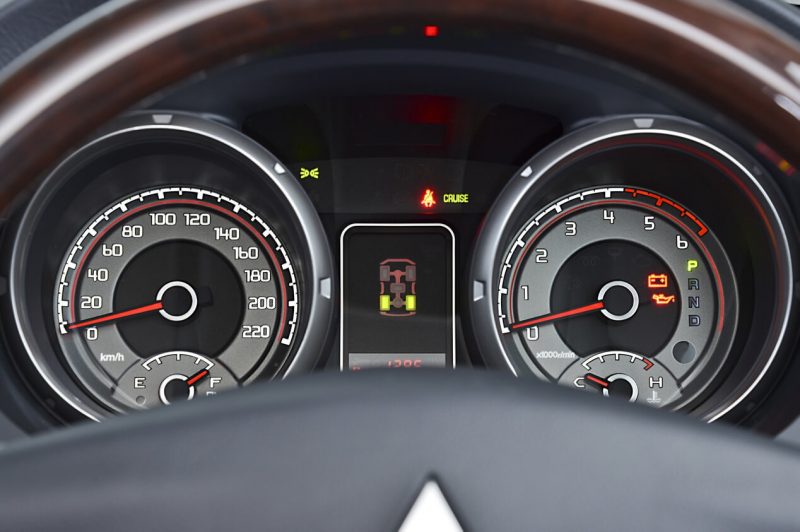
The sofa installed for rear passengers is able to change the angle of the backrest. Speaking of luggage compartment, it is necessary to tell that it is rather big here and possesses 663 liters of useful space, besides the fact that five people are already sitting. If necessary, this number can be increased to a fantastic 1 789 liters of free space, while folding the rear seats.
It is also worth noting that if you fold the back row, you can sleep in the car at full height. Speaking in general, everything is quite simple in the interior design. There are no fancy details, stylish inserts, but the interior looks quite presentable and of high quality, partly due to the use of expensive materials.
The driver’s seat stands out for its visibility. One small drawback is the lack of noise isolation, which many car owners complain about. The latest update should have solved this problem.
Specifications
Powertrain
In Russia, Mitsubishi Pajero of the 4th generation will be offered with 3 variations of power units: a pair of gasoline-powered engines and one diesel-powered engine. In general, the company offers a wider range of power plants. As mentioned above, this list begins with a 3.0-liter engine, which produces about 178 horsepower.
It has a 24-valve gas distribution system such as SOHC and ECI-Multi distributed fuel injection system. Consumption of the “weakest” of the line of engines in combined mode for both boxes of about 12.2 liters per hundred.
Next comes the 3.8-liter 6G75, which also includes a V-shaped six. It has a 24-valve gas distribution mechanism, distributed ECI-Multi fuel injection and MIVEC gas distribution change system. Its capacity is 250 horses. It “eats” AI-95 and requires 13.5 liters in a combined cycle.
Diesel version 4M41 comes with 4 cylinders with in-line arrangement. The diesel has 3.2-liter volume and 16-valve DOHC type timing system with chain drive, electronic direct injection of Common Rail Di-D and turbocharger, which allows to develop 200 horsepower.
The diesel version of the engine can accelerate the car up to 185 km/h of maximum speed, while spending about 11.1 seconds to reach the mark of 100 km/h. But it “eats” less – about 8.9 liters per hundred kilometers in combined mode.
Diesel engine is a fairly reliable engine, the perceived problem areas arise after 100 – 120 thousand kilometers of mileage, when the engine is more sensitive to the quality of fuel and begins to malfunction high pressure valve.
Transmission
It is clear that one shouldn’t expect excellent dynamics from a 3.0-liter 178-horsepower engine, so together with the 5-speed manual transmission, the car reaches the first hundred in 12.6 seconds. The same engine, but with an automatic 5-band automatic requires 13.6 seconds to reach a speed of 100 km/h. 175 km/h – this is the maximum speed regardless of the selected gearbox.
The first hundred jeeps with a 3.8-liter 250 hp engine, paired with a 5-band automatic transmission, is achieved in 10.8 seconds, and the maximum speed is at the level of 200 km / h. The 4M41 engine is synchronized only with the 5-range INVECS-II “automatic”, which has electronic control, allowing you to adjust to the manner of movement of the owner.
The SUV was built on a solid platform and equipped with Super Select 4WD II permanent drive system on a platform of asymmetrical central differential with automatic locking options (viscoft) or forced mechanical locking, which is not available in the starting modifications. Moreover, there is a 2-speed transfer case, and the version with top-end engines as an option will get a lockable rear differential.
Suspension
It is no secret what off-road characteristics this car Mitsubishi Pajero has – 12 titles of victory Dakar rally. The suspension is fully independent, on springs. There are double transverse levers in front of the pendant, and a multilever system on the rear axle.
If to speak for functionality of a suspension bracket Mitsubishi of Rajego 4-th generation it not badly survives, not ideally, but also not critically badly. The weakest point is the bushings of front and rear stabilizers, which can withstand no more than 50 000 km
Rule control
The steering is controlled by a rack and pinion mechanism, which is complemented by a hydraulic booster. Operating the machine is a pleasure.
Brake system
Speaking of the braking system, it is worth noting that there are ventilated disc brakes everywhere – there are 4-piston calipers in front of them and parking brake drums built into the wheels at the back. There are problems with the wear of pads and brake discs.
Dimensions
Speaking about the overall component of Mitsubishi Pajero 4th generation, they are almost preserved, the length of the SUV is 4,900 mm, the wheelbase is 2,780 mm, the width of the car takes 1,875 mm, and the height is 1,890 mm. The height of the ground clearance will vary, depending on what will be the modification – from 225 to 235 mm, which is very good, given the quality of our roads.
With it it will not be afraid to go loaded on a summer residence or on the business. The car is able to overcome ford depths of up to 700 mm, take a storm lift with an angle of arrival up to 36.6 degrees and tow a trailer that is equipped with brakes weighing from 1 800 – 3 300 kg. It itself occupies from 2,100 to 2,380 kg by weight. Depending on the equipment chosen, various light alloy wheels with a diagonal of 17-18 inches will be installed.
Safety
Mitsubishi Pajero of the 4th generation was able to collect a list of modern security technologies. The main “chip” can be called a special reinforced body structure, designed specifically to counteract the impact. There are also a number of electronic assistants. Among them there are ABS, EBD, Break Assist, Brake Override System systems, which allow to provide a confident stop of the vehicle, despite the most extreme conditions.
Based on the Australian NRMA crash-test, it became clear that the technical stuffing of 4 families in the field of safety is very effective. Out of 37 maximum points of the driver and passenger safety assessment, the car was able to score 28.41 points. However, the assessment of pedestrian safety has shown that he is not jealous of the impact with the car, because the SUV received only 2 points out of 36 possible in this segment.
All areas of the driver’s and passenger’s body were able to obtain a high level of protection in frontal and lateral collisions. There is also a caveat here – the driver’s knees got 2 out of 4 maximum points during the direct impact. The reason for this is the absence of knee airbags.
Passive safety refers to the presence:
- Frontal airbags that open in 2 stages;
- Forward side airbags;
- Curtain-type airbags;
- Rear door locks (childproofing);
- Security bars in doors;
- Tensioners for 3-point seat belts with inertial coils.
The active safety and suspension can be attributed to the presence:
- Anti-block brake system;
- Course stability systems;
- Emergency braking assistance;
- Anti-tracking system;
- Systems that distribute braking forces;
- Rear differential locks.
Complections and prices
The standard equipment of Mitsubishi Pajego 4th generation off-road vehicle has a 5-speed manual gearbox. The price of such a version started from $34375,91 and is called Invite. All other modifications will be offered with a non-alternative 5-range automatic and all-wheel drive.
Diesel variation cost from $45276,98 to $47801,14, depending on the equipment. Today, Mitsubishi Pajego 4-Generation SUV can be bought from $43368,24 and only with a gasoline 3.0 (178 hp) engine and has 3 variations of equipment: Intense, Instyle, Ultimate. The basic equipment of the machine got:
- 17-inch alloy wheels;
- Halogen optics;
- Rear fog light
- Side mirrors with heating option and electric adjustment;
- ABS, EBD, BAS, BOS, ASTC;
- Electrical systems
- Frontal airbags;
- Central lock;
- Immobilizer;
- Height-adjustable steering column;
- Cloth salon;
- Preheating option for front seats;
- Board computer;
- Electric window lifters;
- Audio system with 6 speakers;
- Climate control;
- Salon filter;
- Full size spare wheel;
- Windows rest areas;
- Information display installed on the central console;
- Enlightenment of foot space
More expensive equipment has leather seats, xenon headlights with washer, rear view camera, advanced multimedia system, navigation system, entertainment complex with color display for people who sit on the back row and electric hatch.
Fifth generation
Japanese company Mitsubishi knows how to surprise, intrigue and even mislead their rivals. This happened during the Tokyo Motor Show, when the company presented a conceptual version of the 5th generation of Pajero jeeps. The novelty was able to draw attention to itself and makes you ask a lot of questions, so the task of the company’s management is completed.
Many design and development departments like to invent something new and unique. However, it is important to understand that machines are not a white canvas. But the employees of the Japanese company managed to jump above the head, because the designers made an unusual exterior, interior layout and equipped the model with non-standard electronic equipment.
The windshield flows smoothly into the glass roof type, which provides a panoramic view and indicates the cosmic tones. There is no side post at all and the doors open in different directions. There are no handles on the doors, because they are opened electronically.
The “cleaning” has been done in the form of a sensor block. It was placed on a torpedo. It is unusual that it, as if a bar counter, passes the border between the chairs. Getting inside you feel spacious, however, the sensory “border” seems a little fragile and takes a lot of free space. Appearance of the model is a little bit not proportional, but the stern part is more harmonious.
Touching upon the topic of technical equipment, it is worth noting that there are no special innovations here. There is a gasoline engine included in the front end motor configuration, complemented by a PHEV system. The electric motor is also in the front.
Only the battery pack can be found at the back. It is impossible to say that Mitsubishi Pajero V is tied to a socket, however, the model can become an environmentally friendly means of transportation. As a probable internal combustion engine, a 3.0-liter turbocharged V6 MIVEC engine with Super-Charger and a rather capacious battery that replenishes the auxiliary option will be used.
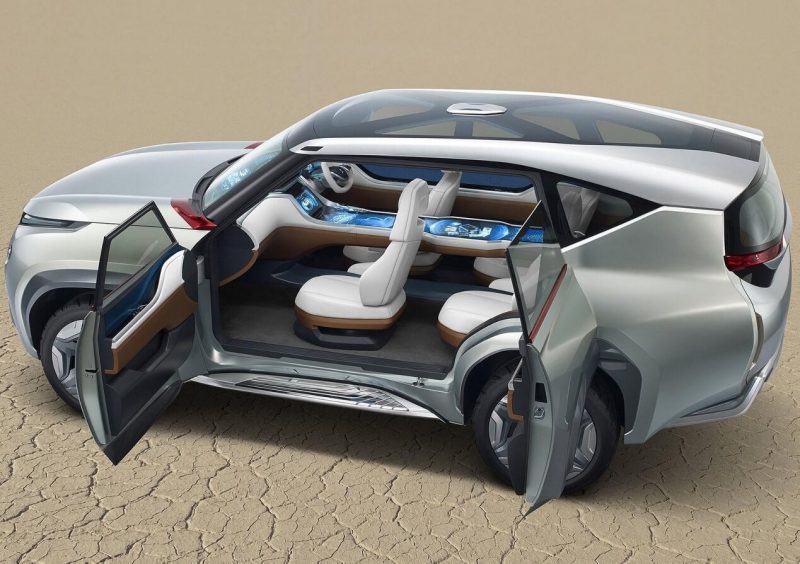
Electric motor power at 70 kW. The charge should grab up to 40 kilometers. An 8-speed “automatic” gearbox will act as a link between the motors and wheels.
Pluses and minuses
Pluses cars
- Classical car design;
- Strictness of the interior;
- Spain simplicity and functionality;
- Powerful power units;
- Availability of advanced electronics;
- Diverse helpers who help you ride and make it as comfortable as possible;
- High level of ground clearance;
- Small wheels;
- Full drive;
- Full size spare wheel;
- Stylish and pleasant appearance;
- Good security level;
- Large luggage compartment;
- Good cross-country ability;
- The famous history of the SUV;
- Material and interior quality in general;
- Approved basic equipment.
Cons of a car
- Swivel castor adjustment is missing;
- Swivel castor adjustment
- Little fuel consumption;
- Almostly not perfect noise isolation of the interior, but still better than it was in the previous version;
- Slightly rough appearance of the car;
- Large dimensions of the SUV;
- Little cost.
We sum up
The 4th generation of Mitsubishi Rajego did not change the car cardinally, but still made it more stylish. In general, its appearance at once forces to respect it, no matter where it is, on the road or on impassability. The car inspires a sense of trust and reliability. Massive arches of wheels, big wheels made of light alloy, footboard, rails and full-size spare wheel eloquently testify to serious intentions of the car.
High ground clearance will not only allow you not to worry about borders, but also about fords up to 700 mm deep. Once in the saloon it will not be possible to notice any exquisite elements, everything is quite simple, accurate and ergonomic at the proper level. The front seats are very comfortable, which can be said about the rear seats, where three adults can easily fit. And they will not be disturbed by the roof over their heads and the front seats backrests.
The luggage compartment is simply of enormous dimensions, which can be enlarged if necessary, while folding the backrests of the rear seats. The powertrains are strong enough to handle their tasks well. All-wheel drive makes it possible to fully experience all the pleasures of off-road driving. A good degree of equipment even in the basic version will please many people.
The company has not forgotten about ensuring the proper level of safety, which will protect the lives of not only the driver, but also the passengers sitting next to him. Various help services that are designed to help the driver in difficult situations are also present in the car. In general, it is a very good car with excellent off-road characteristics and an acceptable price/performance ratio.
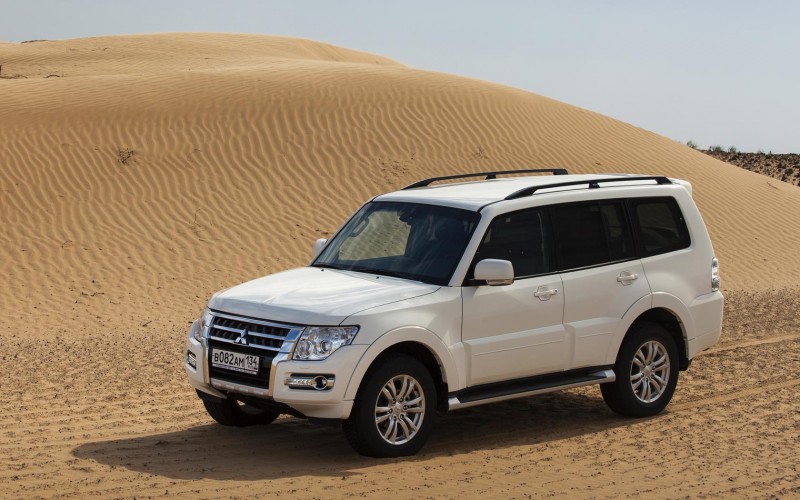 Despite the fact that the conceptual version of the fifth generation of Mitsubishi Pajero has already been presented, there is no real version yet. Of course, the appearance of the prototype is impressive, but it is far from the appearance of a real male SUV. It turns out that the company has a little too much with a futuristic style, although who knows, maybe some element and will be able to find its application in the future series. But so far, the V version is far from off-road. Partly, it is appreciable on not big enough wheels, impractical electric doors and doubtful touch “differentiator” of salon.
Despite the fact that the conceptual version of the fifth generation of Mitsubishi Pajero has already been presented, there is no real version yet. Of course, the appearance of the prototype is impressive, but it is far from the appearance of a real male SUV. It turns out that the company has a little too much with a futuristic style, although who knows, maybe some element and will be able to find its application in the future series. But so far, the V version is far from off-road. Partly, it is appreciable on not big enough wheels, impractical electric doors and doubtful touch “differentiator” of salon.
And the power reserve of 40 km is obviously not enough to consider the model independent from the internal combustion engine to a greater extent. It seems that even if this model is released with the same exterior and stuffing, most drivers will not want to change from their powerful, male and brutal SUVs to a hybrid car with a futuristic design. However, everything will be clarified only by time, because there is no doubt that the specialists of the Japanese company are now working on the next generation.
We advise you to read the article: Mitsubishi Motors, advanced Japanese cars


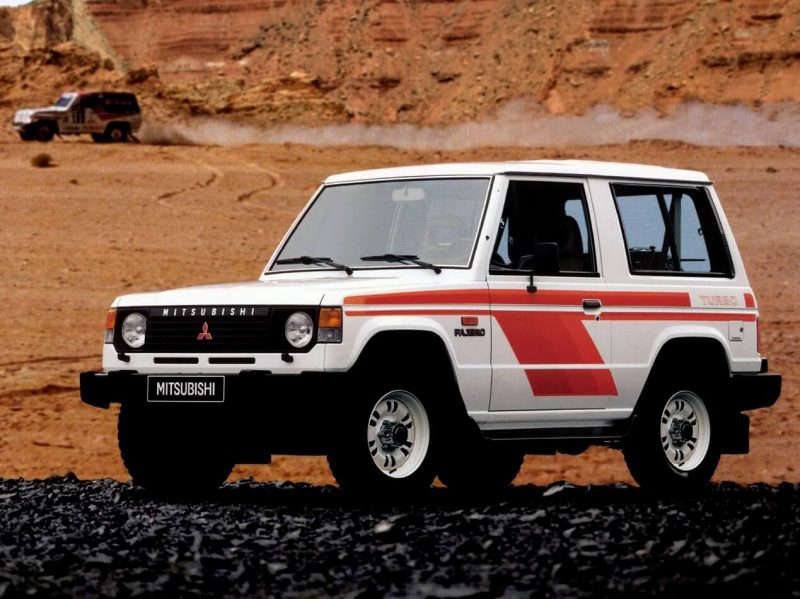
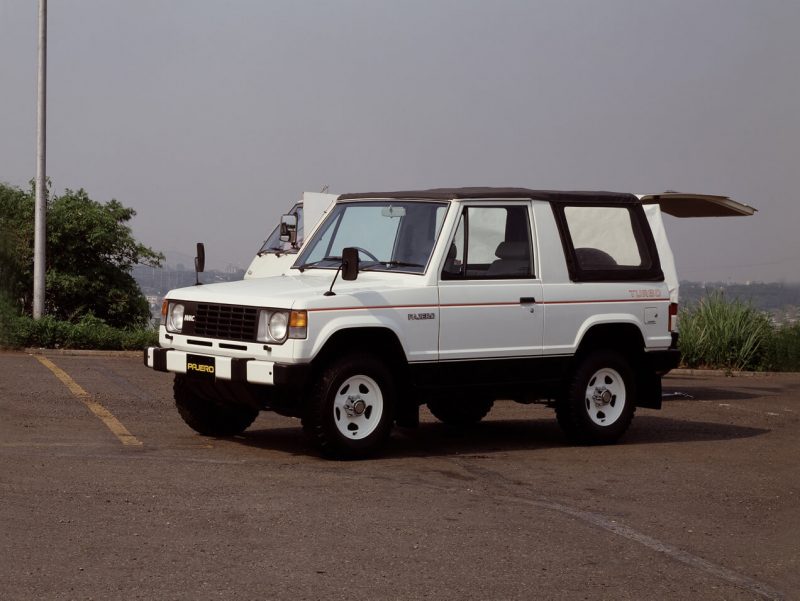
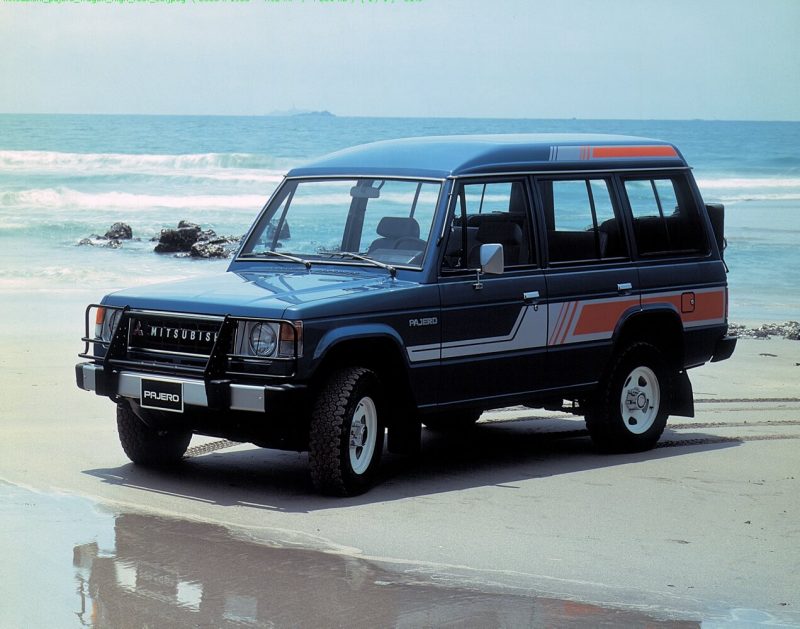
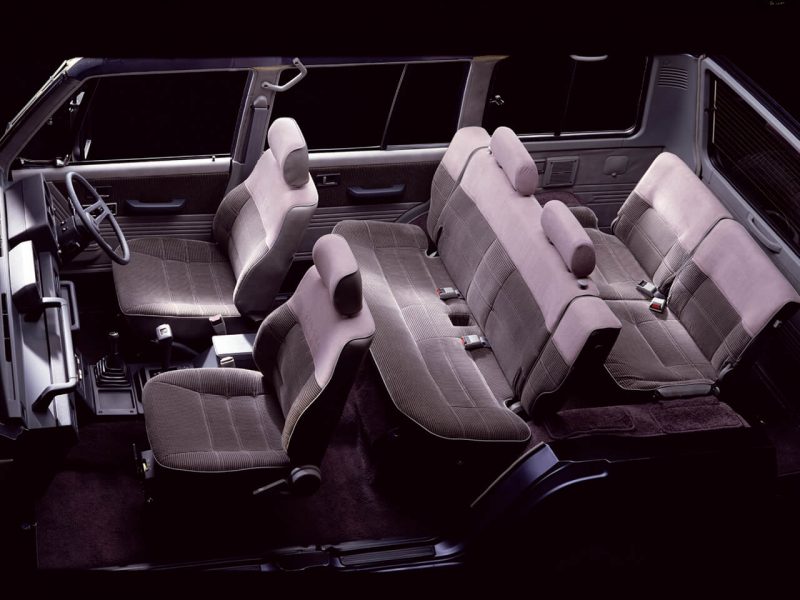
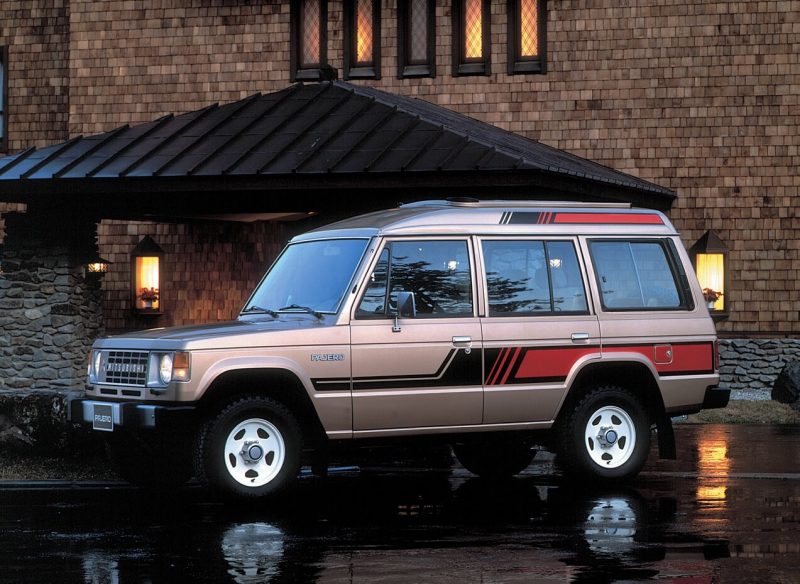
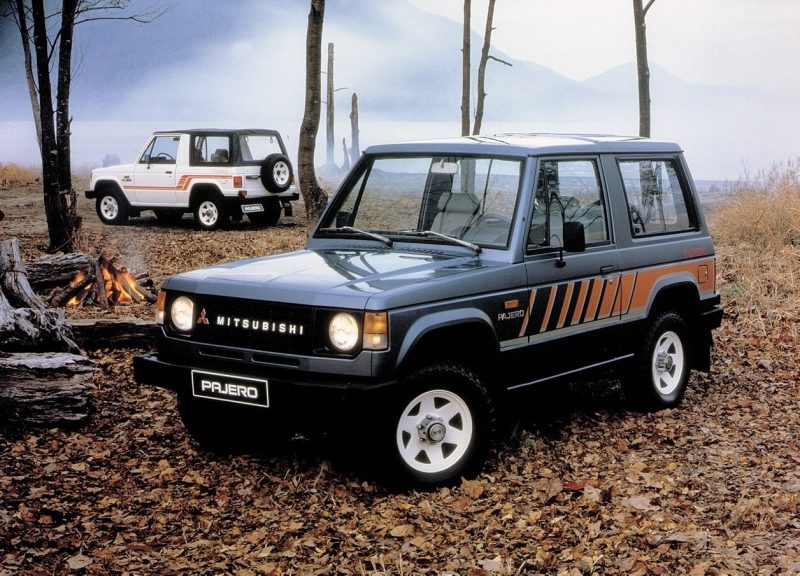
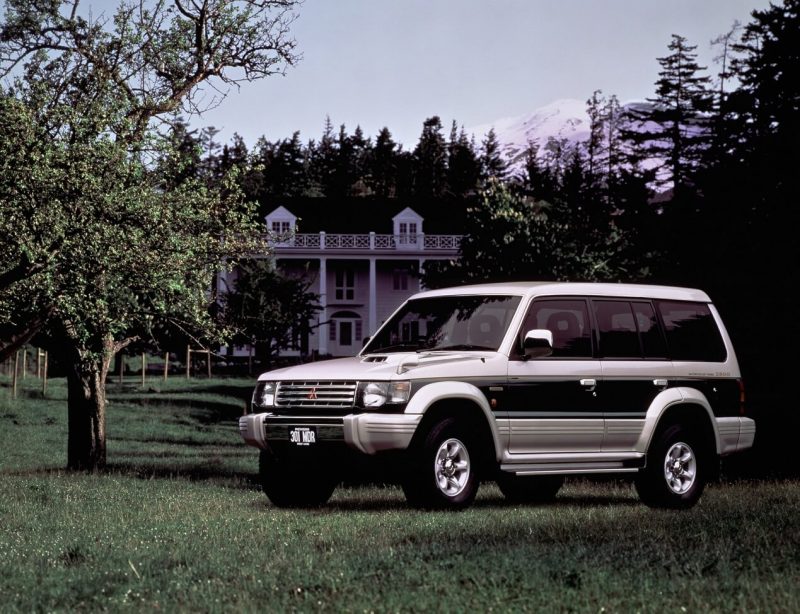
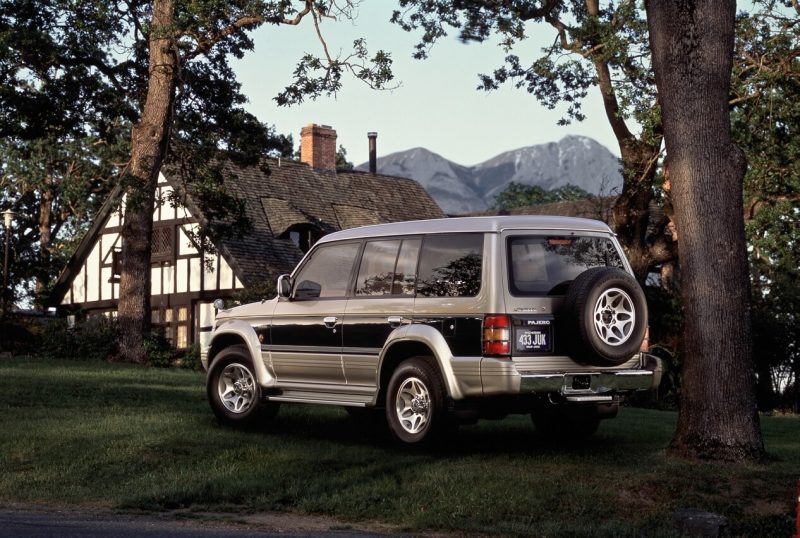
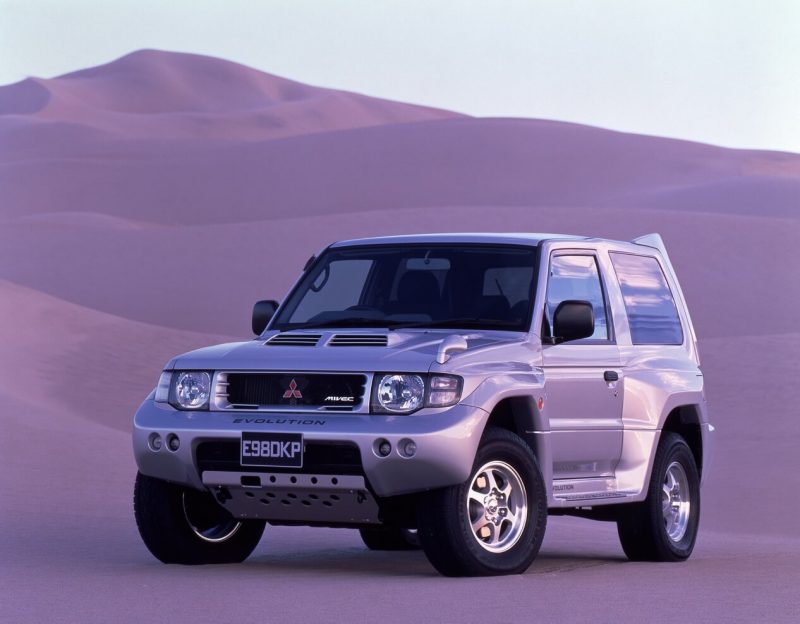

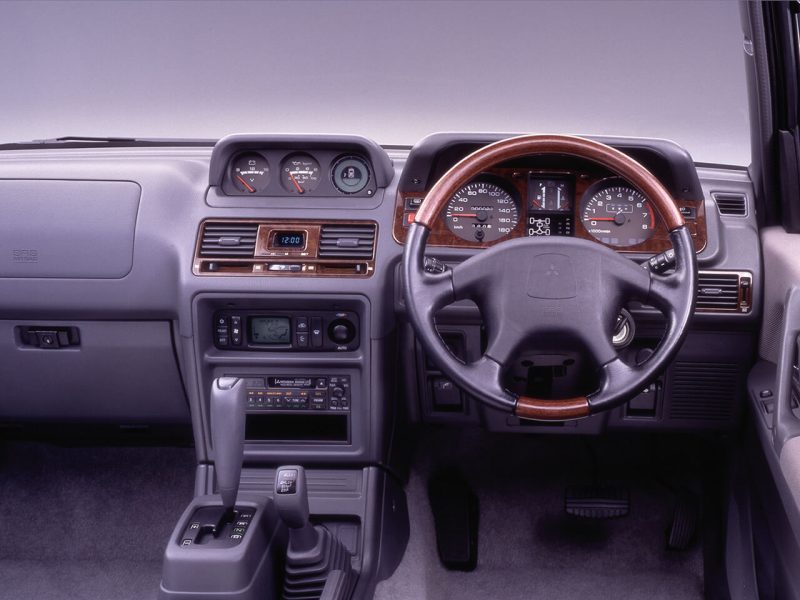
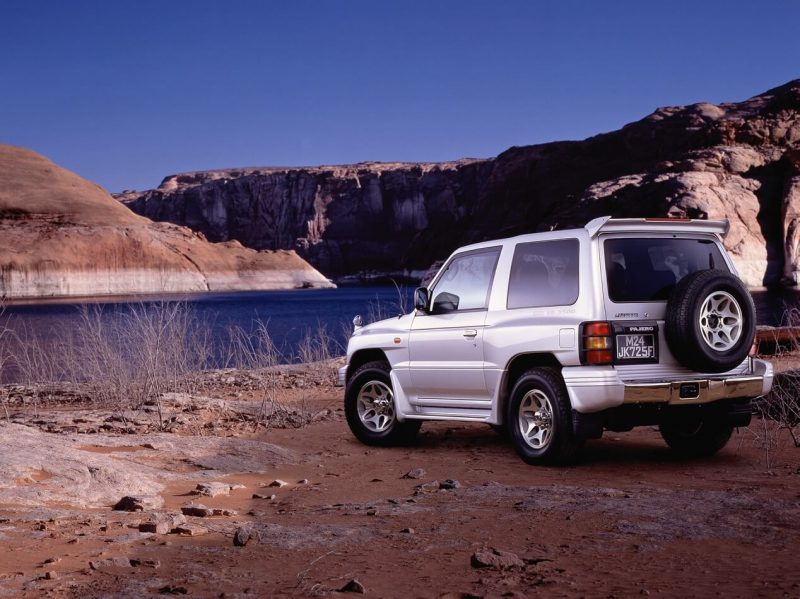
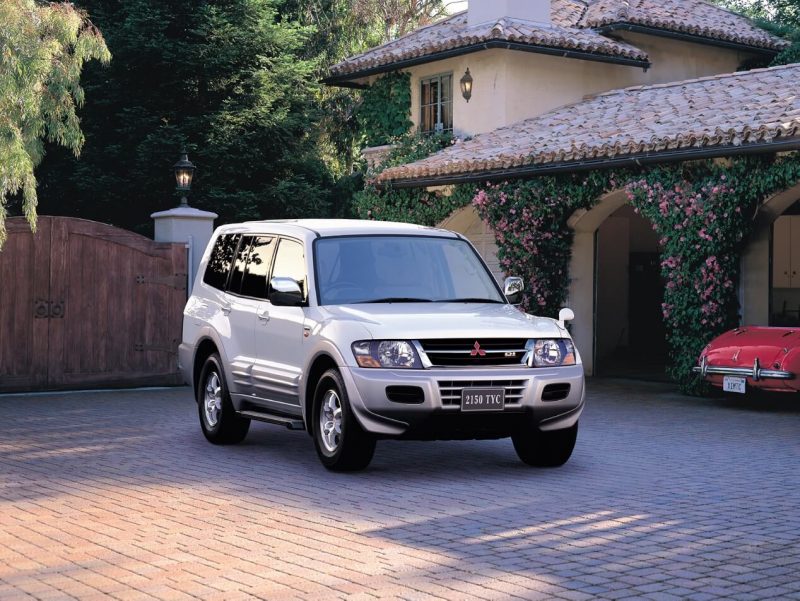
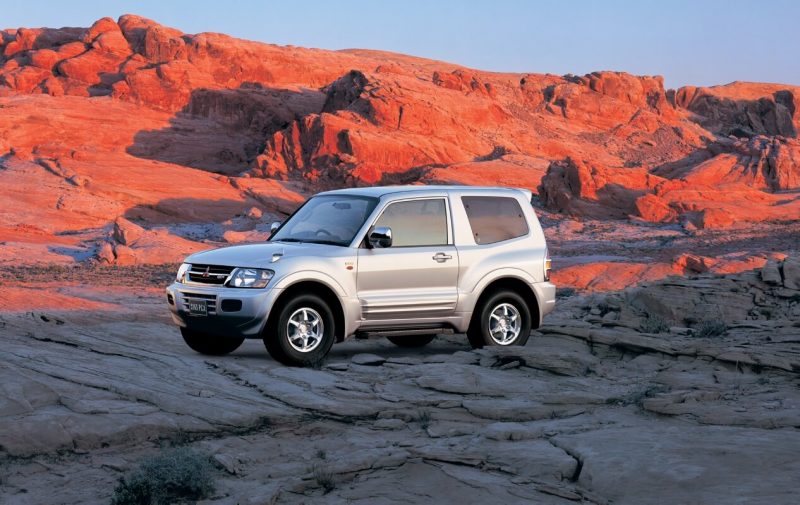
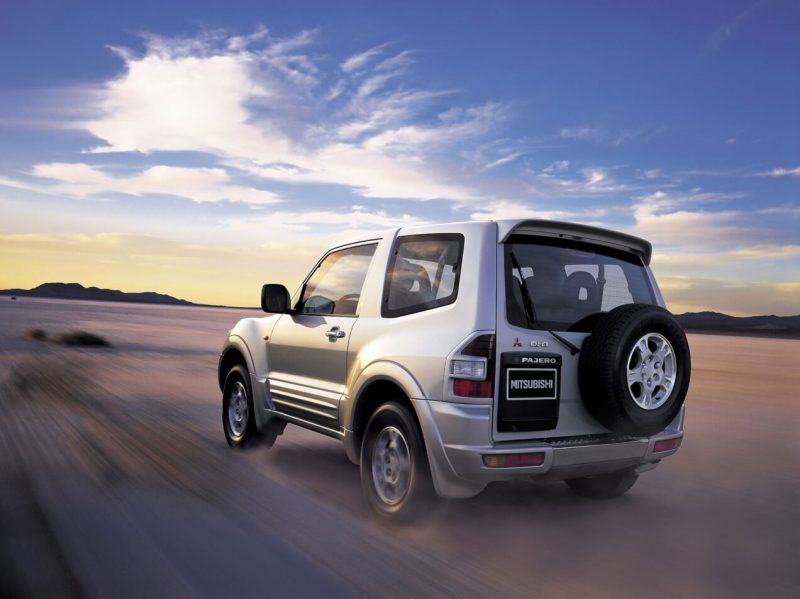
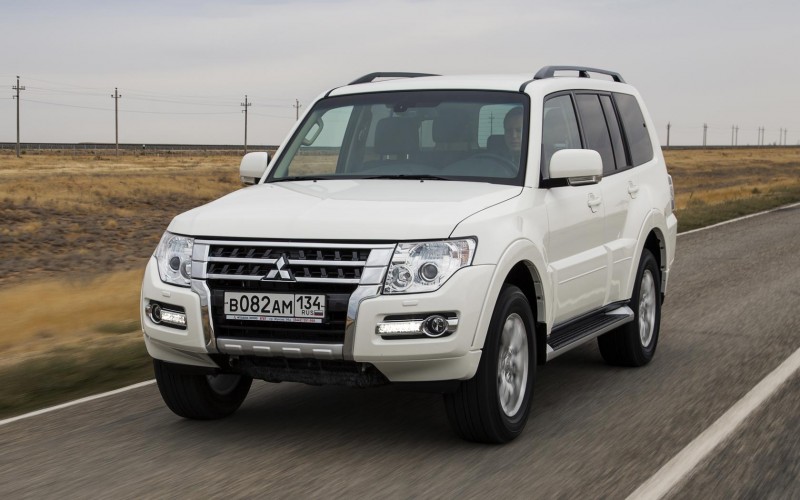
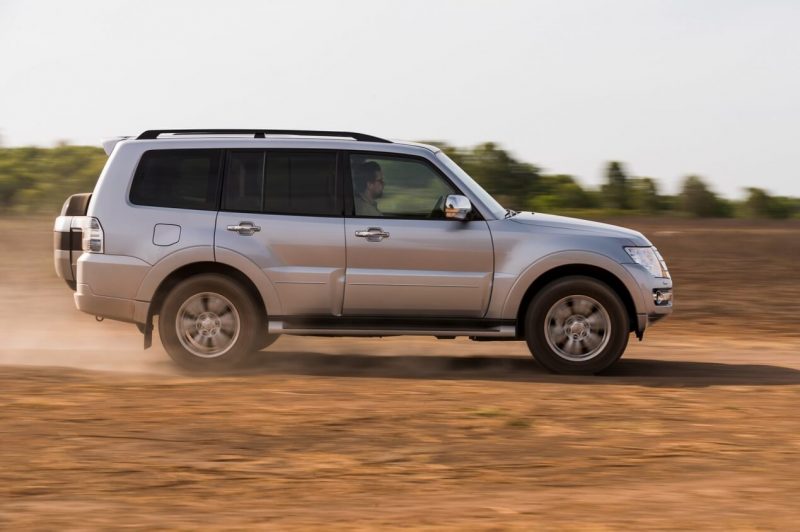
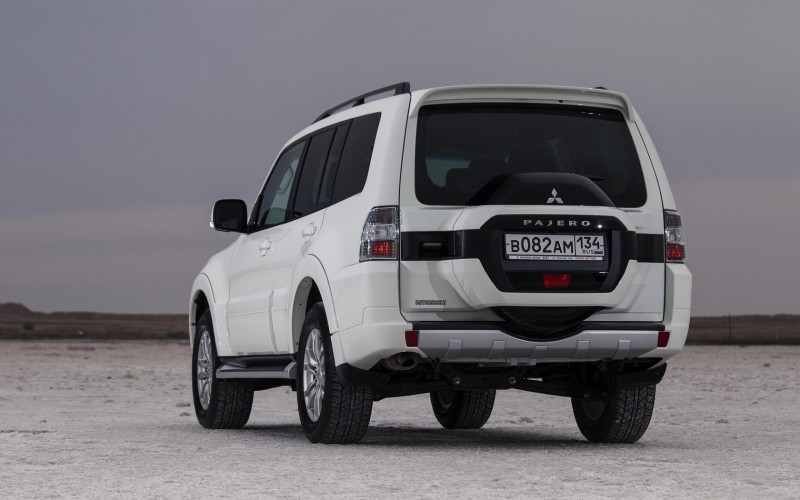
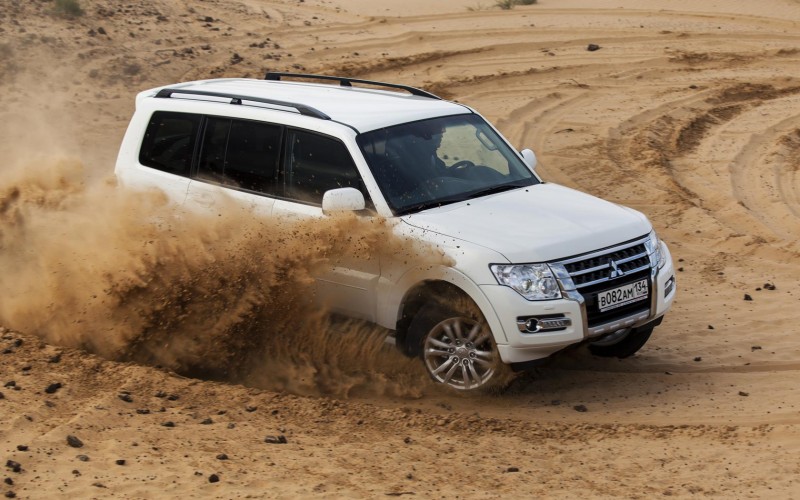
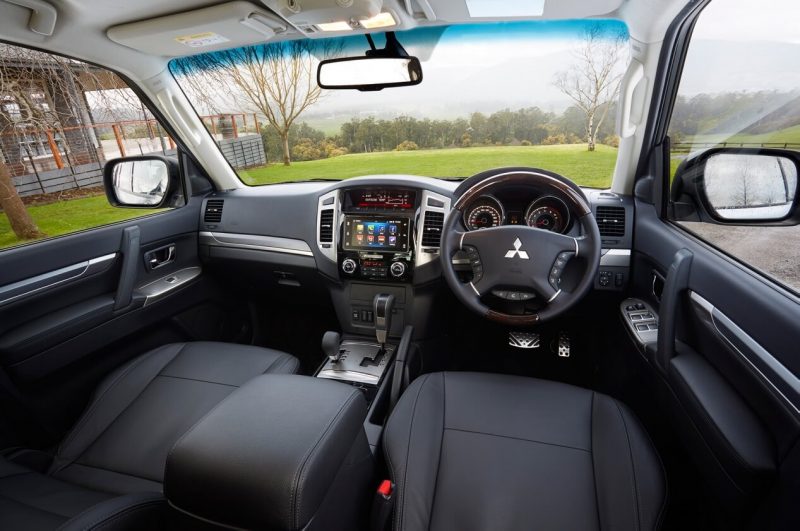
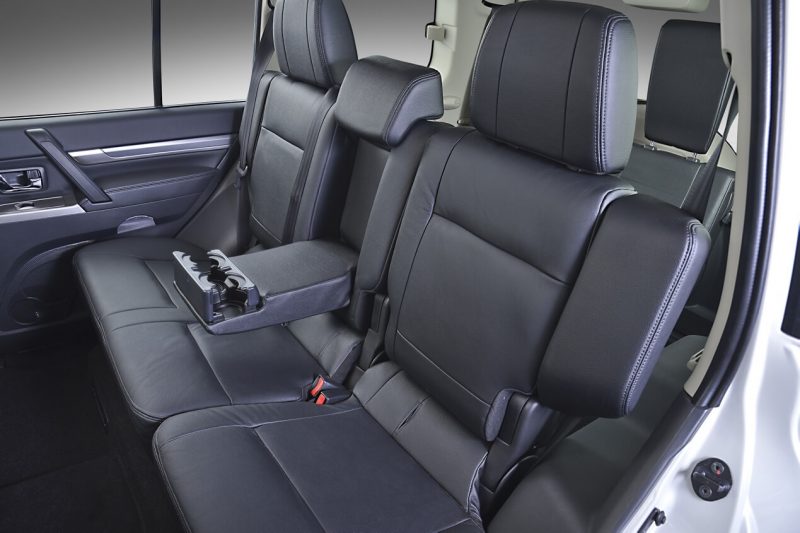
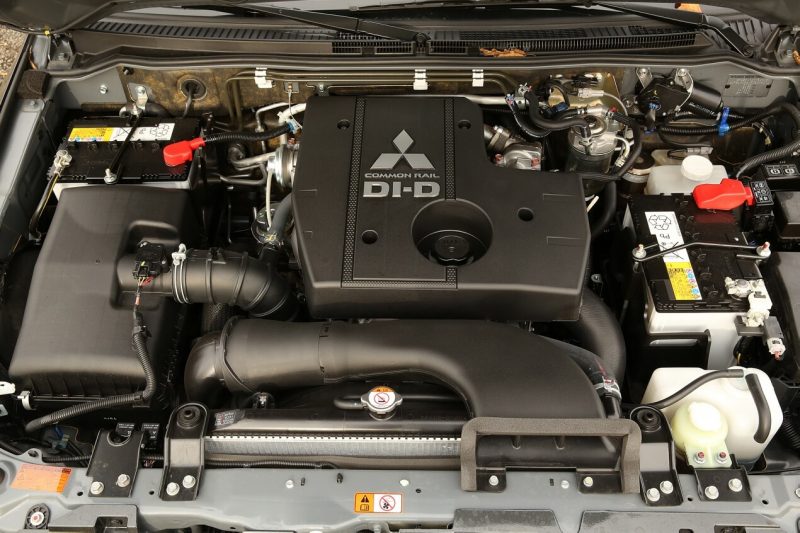
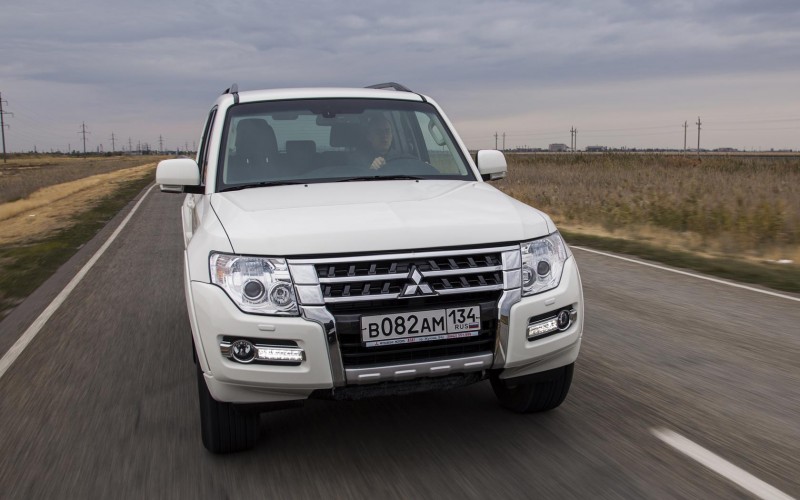
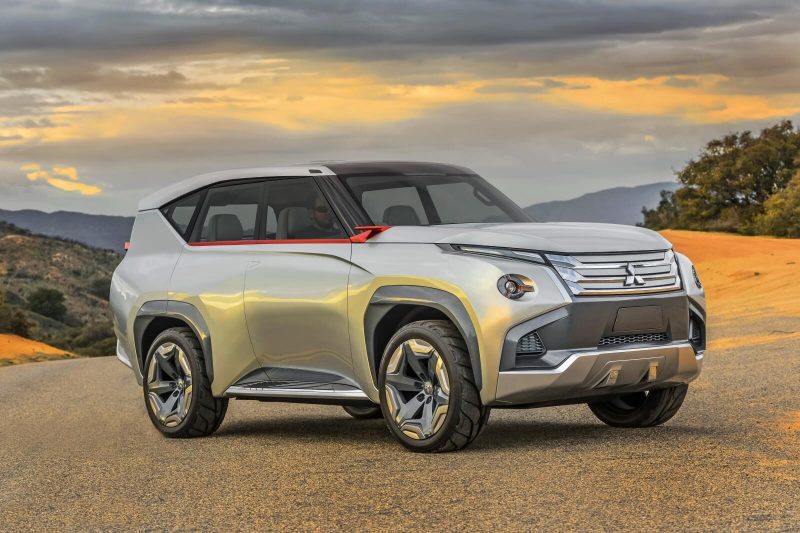
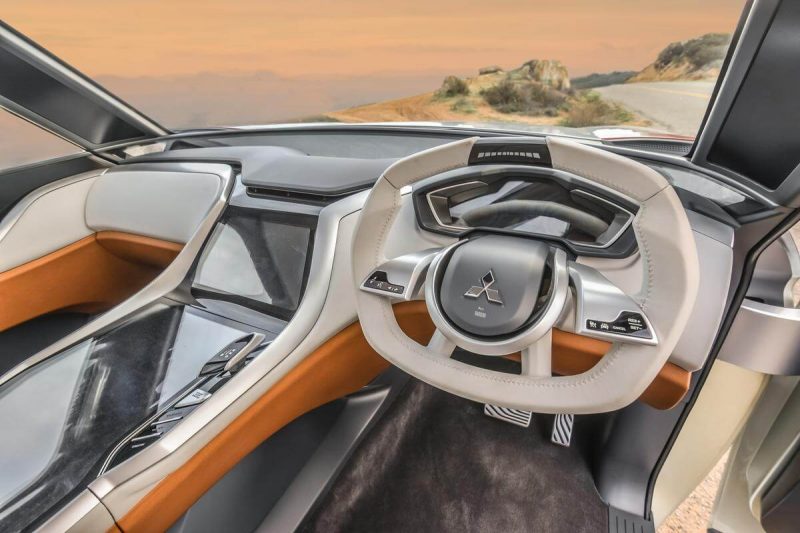
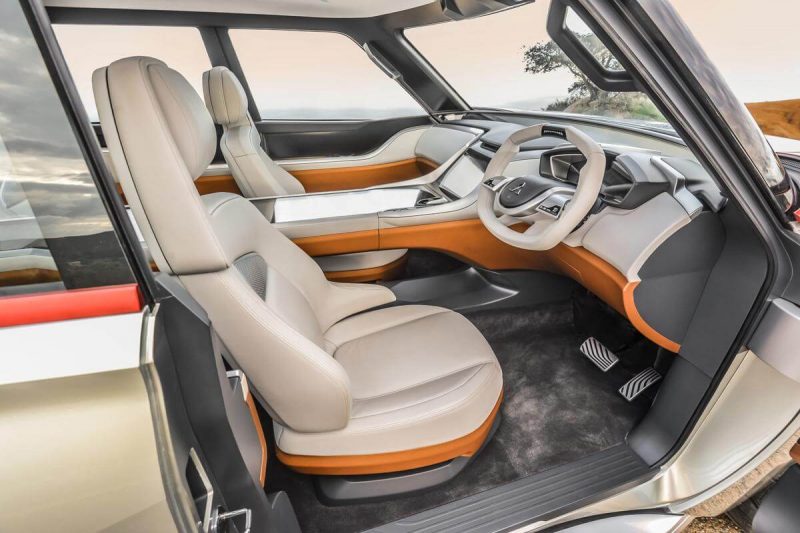
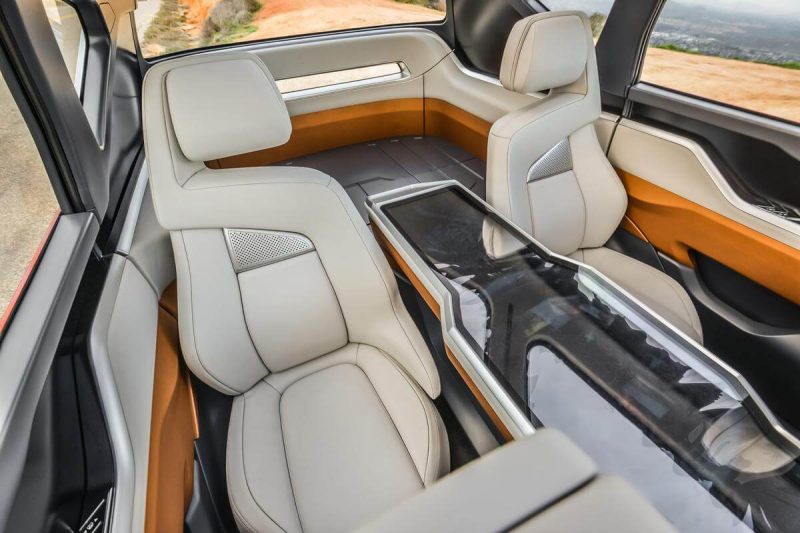
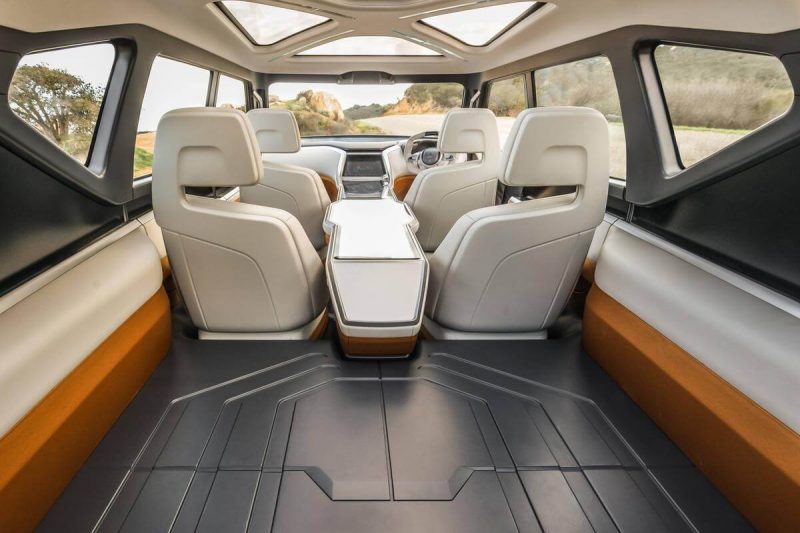
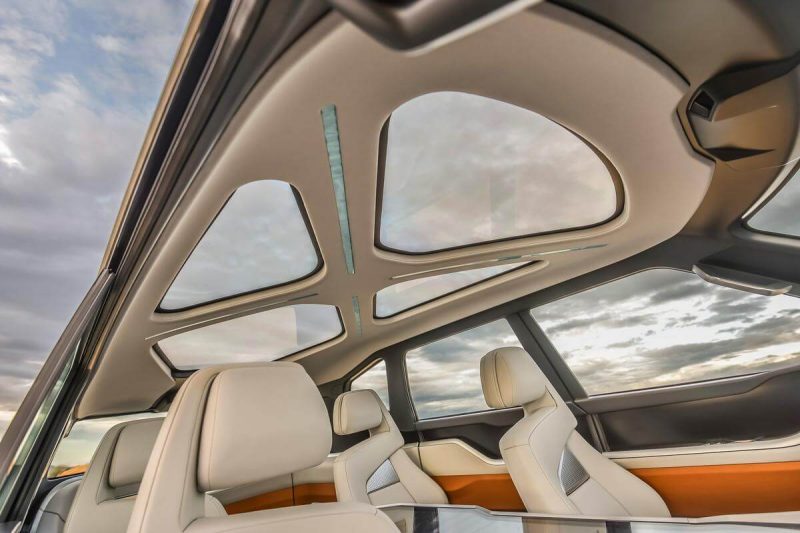
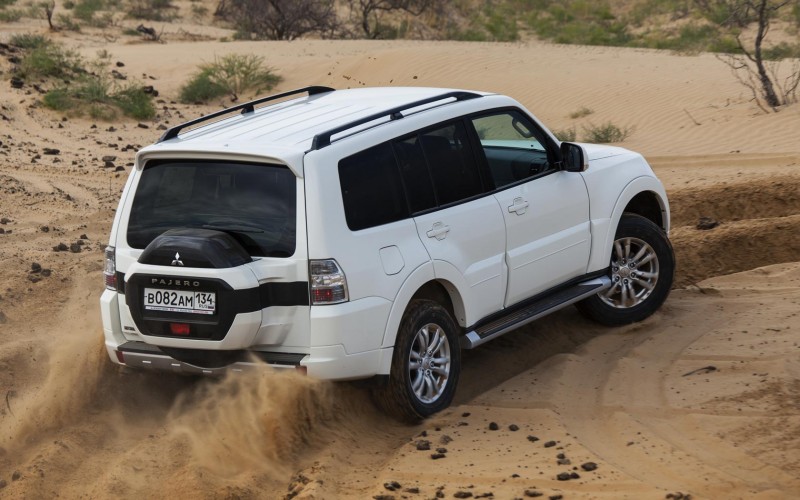
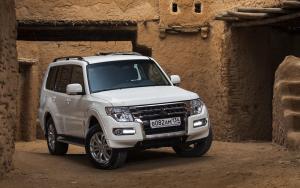

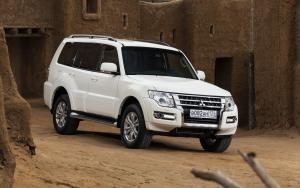
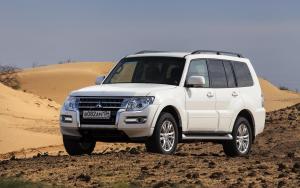
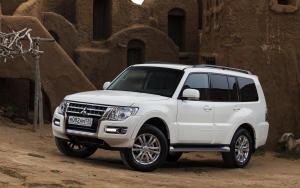
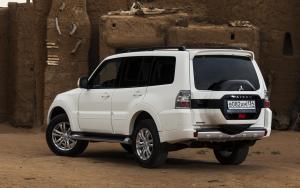
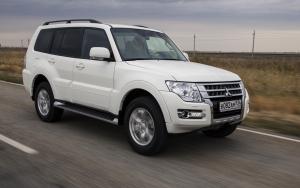
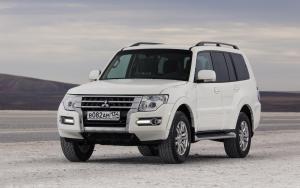
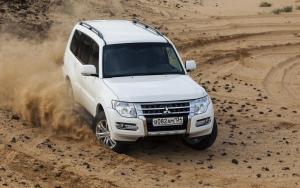
Hello. My name is Eugene. I am 50 years old. I live in the City of Iskitim of the Novosibirsk Region. I visit your advertising blog every day. This is a very reliable and practical SUV. All my life I have been moving on the Russian “jeep” NIVA. But to get the car offered by you to me never in a life will not succeed! And all that remains is to dream! Thank you for having you. With respect, Eugene.